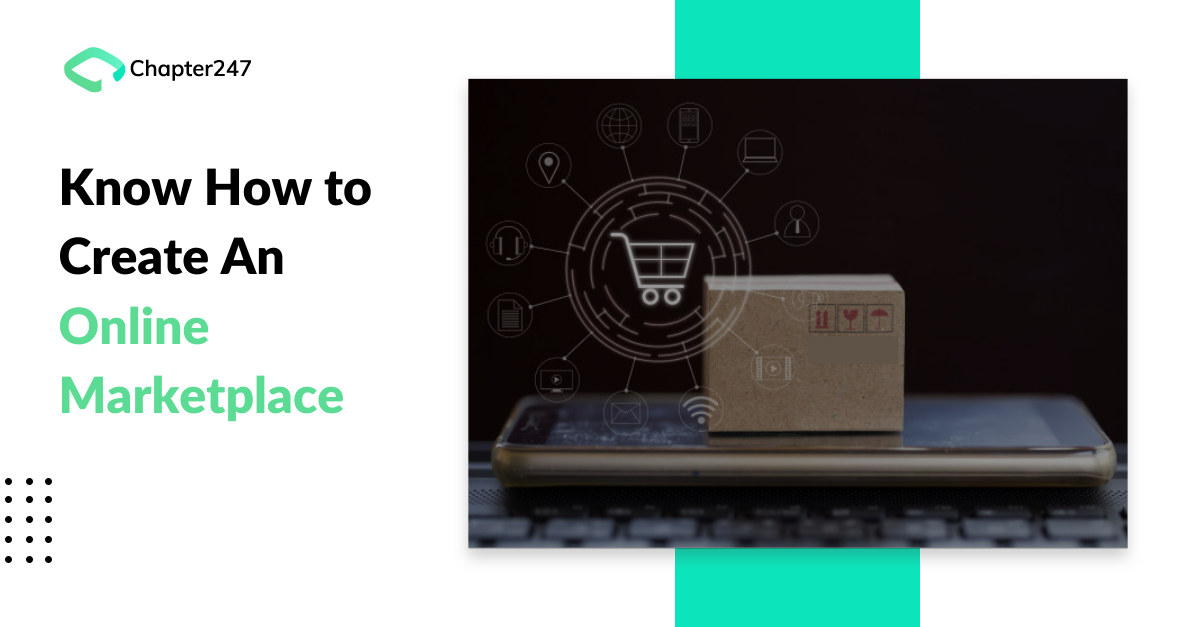In the last several years, online marketplaces have offered true convenience to consumers and their numbers have just exploded. Marketplaces have easily become the most enigmatic segment which is the new wave of retail revolution. Shopify investigated that the global revenues of marketplace platform providers will more than double from $18.7 billion in 2017 to $40.1 billion in 2022.
What is an online marketplace?
An online marketplace is a website or an application facilitating shopping from many different sources. The marketplace operator does not own any inventory and their business is clearly about representing other concern’s stock to a user. Amazon and eBay are the biggest examples of an online marketplace that are also the biggest in terms of market share and profitability.
Online Marketplace is one of the most discussed concepts of E-commerce and with the current surge, niche categories and special demands have erupted ever since. Marketplaces essentially fall into five main categories; B2B, B2C, and Peer-to-Peer (P2P) also referred to as Customer-to-Customer (C2C), vertical and horizontal model. Let us look at each type closely to understand the concept and how the business model is.
B2B Marketplace model
This is a model which talks about a website where wholesaler suppliers sell their product or services to buyers in bulk. The marketplace is usually operated by a third party letting businesses to use it to connect with other businesses for their benefit. Such a B2B marketplace model provides:
- The ability to distribute products and service to a larger base of audience
- The tools to expand sales channels which were never envisioned before
- The knack to sell quickly
- The convenience to not invest a huge amount upfront thereby saving immensely.
Among the top B2B marketplaces are eWorldTrade and Alibaba.
B2C Marketplace model
This model involves two types of users: business and customers and in this model, businesses sell their products and services not to other businesses but directly to customers. Amazon is one such example of an “under-one-roof” marketplace where customers can buy everything from groceries to books, from electronics to pins.
P2P Marketplace
This type connects individuals with similar needs, tastes and incomes to share products and services with each other. Under this type of concept, peers can share products like Etsy or services like Uber or Airbnb in exchange for money or even other products and services. This type of marketplace is a part of the sharing economy that makes the optimal use of resources not by buying but rather renting it out. The most important thing one needs to know about it is that a consumer of today can also become a service provider of tomorrow. The sales cycle is short compared to those of B2B and B2C models.
Vertical marketplace
A vertical marketplace is a concept where the seller offers products of a particular category with a focus on the buyer belonging to a specific sector. Distinct product categories are focussed upon targeting niche markets. For instance, Airbnb targets hotel booking and Uber focusses on cars on rent.
Horizontal marketplace
In this marketplace, the seller offers products from different categories focusing on buyers of all sectors. In simple terms, it implies selling everything to everyone and more on the lines of Amazon which sells every kind of product under one roof.
Why do we need to create an online marketplace
Multi-vendor stores like Amazon and Alibaba have seen roaring success over the past few years only proving that an online marketplace model is always scalable and flexible. Reasons for which you need to create an online marketplace are :
- Efficiency – Cost of creating a Marketplace is almost the same as an E-commerce store but marketplace serves needs of a wider audience with efficiency.
- Revenue – Apart from generating sales revenue, Marketplace models enable other monetization models too, like, commission, referrals, listing charges, subscription, advertising fees,etc. Marketplace owners can opt for the best fitted revenue stream as per their niche.
- Scalable business model – Financial risk involved in establishing an online Marketplace is less as compared to E-commerce stores because less investment in inventory. The only challenge arises here is that the marketplace owner has to maintain the balance between the supply and demand as marketplaces grow quicker.
- Interest of Customer – Marketplace attracts interest of customers hugely due to the variety of suppliers and products. It provides the customer the power of making the choice.

 Source: Statista
Source: Statista
How to build a marketplace:
To get the best solution for your online marketplace we give you three types of models that one can choose from because before you hunt for the online marketplace solutions provider, it is important to understand these types first.
- Saas based model (for a small company)
- Development from scratch
Saas based model
This is one of the fastest ways to launch the marketplace. It is a software licensing model in which the software undergoes licensing centrally hosted and based on subscription. This type removes the need for any heavy technical deployment and eliminates the hassle of creating e-commerce platforms and infrastructure maintenance. SaaS providers implement all technical parts and centralize systems.
Pros and cons
- Rapid set-up
- No need for any technical background
- Zero server maintenance & hosting charge
- 24×7 support from the support team.
Cons
- Data is on a different server.
- Very few possibilities of customization
- Limited Accessibility
Creating the online marketplace from scratch
Creating the online marketplace from scratch is a great solution because you get to build exactly what you have in mind. You have to approach an online marketplace solutions provider because you can be rest assured that your website is in safe hands and you can develop something on the lines of Amazon or eBay. If you already have an existing solution but want to add functionalities, a third-party solutions provider will also ensure that the older version is rejuvenated.
The benefits of roping in a custom software development company is that your online marketplace solution will be
- Highly customizable and scalable.
- Data is on the manageable server
- Easy Integration third-party plug-ins.
- Web API feature.
- Simple interface & easy to use.
- Community support.
Let us see the 4-staged process that will take you closer to the online marketplace website you are envisioning.
A 4-staged process
Now that you are confident about your idea’s potential and believe that there is a market for it and that it will solve problems and earn money. But, do not hurry yet to approach investors because first, you have to figure out how you could launch a marketplace website.
1.Build a marketplace prototype and then test the idea
The first important step is to give visuals to the idea which can be done by a prototype which is either a simplified model or a sketch that you are going to build. You could begin your online marketplace building with an interactive HTML prototype depending on the skills that you are aiming at. A prototype with technical requirements will be good when the development of the marketplace starts. It makes sense to hire a professional and noted custom software development company to create a prototype of high quality. A prototype is the best way to present an idea to the ones who matter in the first stage, generate interest from your first users, and attract early investments.
2.Prepare Project documentation
Preparing project documentation is an essential task because creating detailed project report documentation will save you lots of time and money in the marketplace website development process. The documentation will present a clear road map for them to deliver as per your requirements.
3.Launch the MVP
Now that we are through with the prototype building and documentation, you are now ready to start building the Minimum Viable Product or MVP. A minimum viable product will just have enough features to attract early users. The main idea is to get the application in the hands of the target users and get their feedback on where the idea lacks in functionality and make a case for steady improvements. MVP can be an eye-opener most of the time because the assumptions you could have made about the market could be false even if the idea was brilliant. With MVP you stand a chance of rebuilding or adjusting the idea to meet the needs of the market, saving you a lot of costs you might have incurred in the future.
Check out our perfect guide on how to build a great MVP in our earlier featured article.
The idea of an MVP is to start an online marketplace with just enough functionalities to attract early adopters. It is not about offering a comprehensive range of features but more about idea validation, finding potential users, and receiving appropriate feedback and constantly improving it.
4.Grow your marketplace user base
Long before you get your online marketplace built it is important to start growing your user base which can be the real deal when it comes to attracting most loyal customers.
Before we leave
It is clear that online marketplaces in the near future will see unprecedented growth. It is a long-term initiative and has the potential to grow faster than other businesses. Online marketplaces invite more traffic and with a broader set of preferences available it provides convenience for customers to stay. This has not just benefited buyers but also small and medium sellers because they get the space they have always wanted. If you are looking to create an online marketplace, feel free to connect with us.
We are ready to hear it out!







